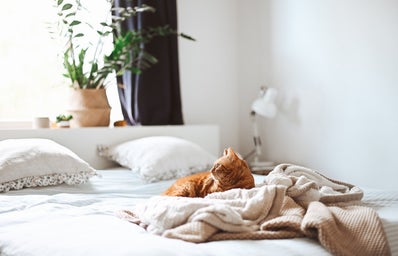I first discovered brown noise while scrolling through Spotify looking for sleep playlists. I wasn’t exactly sure what it was, but I hit play and felt my mind go quiet before falling asleep faster than I had in months. I’ve been using brown noise for the past few weeks, but I wanted to know more about what was helping me fall asleep without the help of melatonin. I did some research into brown noise to figure out what exactly it is and how it works:
On the spectrum of noise signals used by physicists and audio engineers, there are different colors for the frequency of noise produced and its equivalent in light waves. For example, if violet noise was translated into light waves, it would produce violet light. Using this analogy, white noise mixes sounds at every audible frequency, which makes it sound louder and more fizzley. Pink noise is slightly more muted than white noise and plays lower frequencies at a higher level. Brown noise contains all frequencies, but plays lower frequencies at a higher level and higher frequencies at a lower level, making it sound muted and low.
Brown noise is the only color of noise that is not named for the frequency of its translated color, but instead for Brownian motion, which is the random motion of particles that are suspended in a liquid or gas. Brownian noise is a type of static noise that mimics Brownian motion instead of light waves.
So that’s what brown noise is, but how does it help with sleep and stress?
It’s quite common for people to use white noise machines to help them sleep – it’s even used for babies, as it’s believed to mimic the noise from inside of the womb. However, the science behind brown noise and sleep is limited – and no, making a TikTok about it doesn’t count as scientific evidence. But for those who may struggle with ADHD, their brains keep searching for something else to do while they’re trying to focus. Maybe that’s why you’re on your phone while watching TV or need to listen to music at all times to keep your brain distracted while you’re doing homework. Noises of color simply fill the gaps in your brain so that you can focus on other work or relax enough to fall asleep.
While there might not be enough scientific research into the benefits of brown noise, it definitely doesn’t hurt to try it out and see how it suits you. For me personally, it has helped me a lot with falling asleep on time and getting deep enough sleep to feel refreshed the next morning. Hopefully, this gives you enough information to understand what exactly you’re listening to and how it might affect your sleep.
Sources:
https://www.nytimes.com/interactive/2022/09/23/well/mind/brown-noise.html


